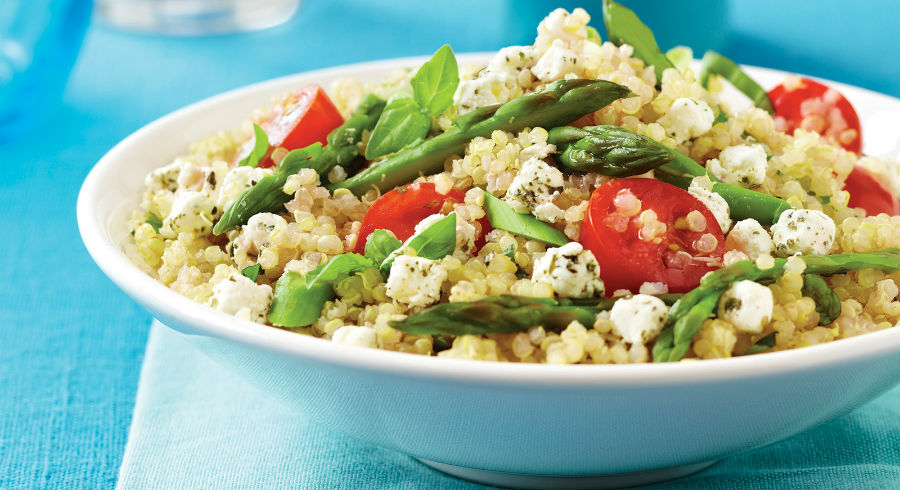We probably already know that weight management depends on two main factors – diet and exercise. Most of us see the equation this way: if you’re too lazy to exercise, then cut down on food intake; if you want to eat your fill, make sure you get that gym membership.
However, recent studies have shown that weight loss is actually really 80% diet and 20% exercise. What this means is that while we could be sweating it out at the treadmill everyday, poor eating choices may undo all that hard work. It’s more important to focus on what we eat and how we eat rather than starving ourselves trying to lose a couple of kilos. Here are seven tips to reaching your weight goal while staying healthy and full.
1. Eat cleaner

Experts agree that sustainable diets also follow the 80-20 rule: Choose clean and healthy foods 80% of the time, then limit your cheat meals to the remaining 20% of the time. Balance and moderation are the keys to sticking it out with a long-term diet plan, so don’t worry about making some unhealthy food choices (including eating out!) sometimes.
Eating clean means consuming more fresh foods and less processed foods. This applies to meat, but also means cutting out canned foods and the like. Eliminating refined sugar from your diet also helps to trim down on calories that just aren’t worth it. Cooking your own meals at home is a great way to make sure you’re eating cleaner, since you know what is going into your food.
2. Balance out your meals
https://www.instagram.com/p/B9euTDJnYJ8/?utm_source=ig_web_copy_link
If you’re having a heavy lunch, eat less for dinner. If you didn’t have time for lunch, have a bigger serving for dinner, but try to eat this meal earlier than you normally would. Balancing out your meals this way helps to prevent overeating. As a bonus, this helps with digestion, which in turn may ensure a good night’s sleep.
3. Downsize your portions

Eating more meals, but in smaller servings, has shown to help with metabolism and reduce cravings. If you can, take five to seven small meals a day to keep your metabolism running throughout the day. Some of these meals can also be repeats, so you only need to prepare them once and then divide the food into two or three meals.
4. Size matters – when it comes to your plate

Your brain can be easily tricked into feeling fuller even when you eat less. The secret is to use smaller plates! When your plate is smaller, you feel fuller after clearing the plate even though you’ve actually eaten less than normal. Using smaller plates is also a good way to prevent overeating, since you give your stomach more time to decide if it’s full (it usually is before you know it). You can then adjust your meal portions accordingly.
5. Fill up on protein

Got cravings? Having a protein-based diet actually keeps you feeling fuller throughout the day and reduces the inclination to cravings. For example, eat a high-protein breakfast of whole-wheat cereal and low fat milk, or Greek yogurt with berries. Throughout the day, balance carbs with protein by choosing more leafy greens, fruit, lean meat, fish, and whole grains.
6. Adapt recipes

Cooking at home is encouraged since you can be more flexible about your meals and portions. When following recipes, use good judgement to adjust the ingredients where appropriate.
For example, use olive oil where oil is needed, and use it sparingly. Cut down on salt and sugar and any sauces as well. Sauces usually contain a lot of sodium, which can be damaging to our bodies if taken in excess. Choose whole grains over refined grains where possible, such as multi-grain bread instead of white bread, and brown rice instead of white rice.
We have picked out substitute ingredients that make healthier alternatives that you can choose from here.
7. Make time for physical exercise

Although diet makes up 80% of the equation, the remaining 20% is important too. A healthy lifestyle is one that is balanced, so make sure you get some exercise in every week too. Aim to have about two hours of aerobic exercise per week, or more if you can afford it. If time is a constraint, break this up into a more manageable 20-minute session per day.
The best time to exercise varies from individual to individual – you might feel more refreshed if you work out in the morning before breakfast, or you might sleep better if you work out at night before a nice hot shower. Go with the one that you’re most able to keep up with!


